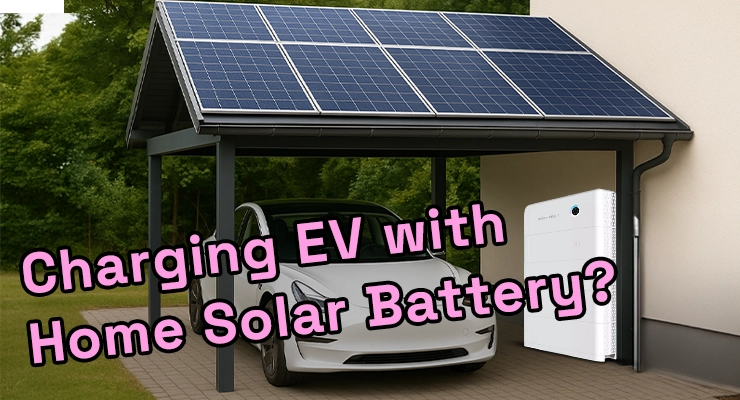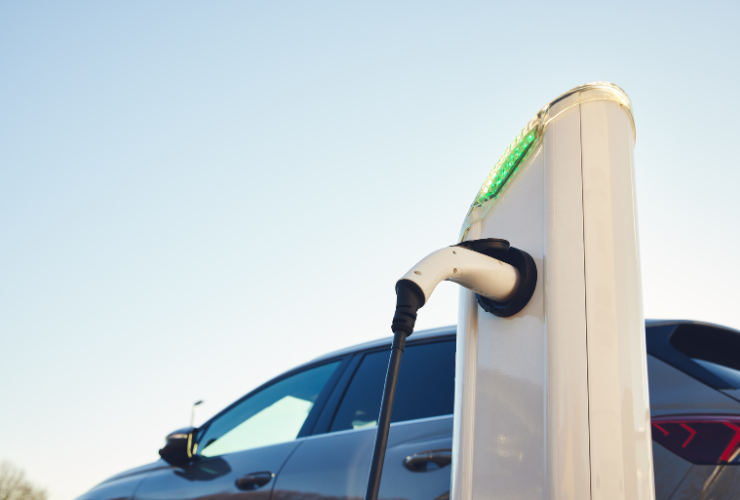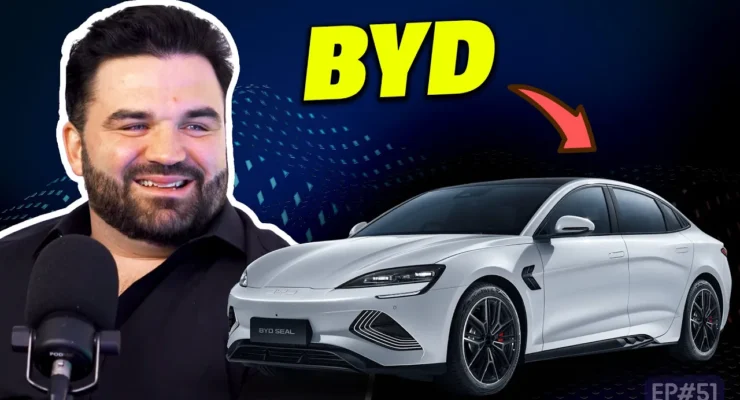Fast read
Using your solar battery to charge your electric vehicle at home is an excellent way to maximize your solar investment. This approach allows you to store free solar energy generated during the day and use it to charge your car overnight, reducing reliance on expensive peak grid electricity. However, it requires careful system sizing to ensure your solar array and battery can cover both your household's needs and your EV's significant energy demand.
Charging Your EV with a Home Battery
As more Australians embrace electric vehicles, a common and very smart question arises: how does home charging fit in with a solar and battery system? For many homeowners who have already invested in solar, using that clean energy to power their car is the ultimate goal. It represents true energy independence and the lowest possible running cost for their vehicle.
Using your home battery to charge your EV is not only possible, it’s one of the most effective ways to maximise the value of your energy storage system. Instead of exporting your excess solar energy to the grid for a modest feed-in tariff, you can store it and use it to displace the much higher cost of grid electricity you would otherwise need to charge your car. This article will walk you through the key considerations to make this strategy work for you.
How does charging an EV with a home battery work?
The concept is beautifully simple. During the day, your rooftop solar panels generate electricity. This power first runs your home, and any surplus energy is used to charge your home battery. If the battery is full and you’re still producing excess power, you can either direct it straight to your EV if it’s plugged in or export it to the grid.
The real benefit comes overnight. When you plug your EV in after coming home from work, instead of drawing expensive peak-rate electricity from the grid, your system intelligently pulls the stored solar energy from your home battery to charge the car. This is all managed seamlessly by your battery’s inverter and energy management system (EMS).
Key considerations for charging your EV from a battery
While the idea is straightforward, there are several important factors to get right to ensure your system performs as expected and meets your needs.
Your solar and battery system must be sized correctly
An EV is a significant energy load—one of the largest in any household. The average Australian drives about 37 km per day, which requires roughly 5.6 kWh of energy. To replenish this from a battery overnight, on top of your regular household energy use (which can be 11 kWh or more), your system needs substantial capacity.
- Solar Array: If your current solar system was sized just for your home, you’ll likely need to add more panels to generate enough extra energy to cover your driving needs. A good rule of thumb is to add at least 5-6 kW of solar capacity specifically for the EV.
- Battery Size: A typical 10 kWh battery might cover your evening household usage, but adding an EV will likely require a larger battery, or even a second one. For example, to cover an 11 kWh home usage and a 10 kWh charge for your car, you would need over 21 kWh of usable battery capacity.
The impact on battery lifespan
Charging an EV is a demanding task for a home battery. It involves a deep, sustained discharge over several hours. While modern batteries are designed for daily cycling, regularly using them for heavy EV charging will contribute to their degradation over time.
It’s important to understand that home batteries, particularly those with Lithium Iron Phosphate (LFP) chemistry, are generally better suited for the regular charge and discharge cycles of home energy storage than the high-density batteries in some EVs. However, a home battery’s primary design is to be stationary and consistently available, which makes it a reliable source for overnight charging.
You need a smart EV charger
To make this work efficiently, you can’t just plug your car into a standard power outlet. You need a dedicated Level 2 EV charger that can integrate with your solar and battery system. These chargers offer faster, safer, and more efficient charging than a basic Level 1 charger.
Modern smart chargers have modes that can be set to prioritise charging from surplus solar during the day or from your home battery at night. This intelligence is crucial for maximising your self-consumption of solar energy and minimising grid costs.
What kind of hardware makes this integration seamless?
The technology to manage energy flow between solar panels, batteries, the home, and an EV charger is rapidly evolving. Many leading brands now offer all-in-one solutions or components designed to work together.
For instance, a system built around a powerful hybrid inverter, like those from Sungrow, can intelligently manage these complex energy flows. When paired with a compatible smart charger and energy meter, the inverter can direct solar to the battery and then discharge the battery to the EV based on pre-set rules or real-time conditions.
Some companies are taking integration a step further. Sigenergy, for example, offers its SigenStor system, which is a 5-in-one solution that combines the solar inverter, battery system, and a powerful, bidirectional DC EV charger into a single unit. This allows for highly efficient charging directly from the solar panels and battery (DC-to-DC), and it is future-proofed for Vehicle-to-Home (V2H) applications, where your EV could one day power your home.
Is it a good financial decision?
The financial case for using a battery to charge your EV hinges on a simple calculation: is the cost of storing and using your own solar energy cheaper than buying electricity from the grid?
- Cost of Grid Electricity: Charging an EV during peak evening hours can be expensive, with rates potentially exceeding 40-50 cents per kWh in some areas.
- Cost of Solar: Your solar energy, once the system is paid off, is effectively free.
- Feed-in Tariffs: The rate you get for selling excess solar back to the grid is often low, typically around 5-10 cents per kWh.
By storing a kWh of solar energy in your battery and using it to charge your car, you are saving the high grid electricity price, making each kWh of solar you generate far more valuable. While the upfront cost of a large battery system can be significant (often $1,000 – $2,000 per kWh of storage), government incentives like the federal Cheaper Home Batteries Program can help reduce this initial investment.
The verdict: A smart strategy for energy independence
Using your solar battery to power your home EV charger is an excellent strategy for savvy, energy-conscious homeowners in Australia. It allows you to fuel your car with clean, self-generated energy for the lowest possible cost, drastically reducing your household’s carbon footprint and energy bills.
The key to success lies in planning and proper system design. You must ensure your solar array and battery are adequately sized for the extra load, and that you use a smart charger capable of integrating with your system.
If you are considering installing a new solar and battery system with an EV in mind, or upgrading your existing setup, consulting with an accredited installer is crucial. They can help you assess your specific energy needs, driving habits, and design a system that will reliably power both your home and your car well into the future.





